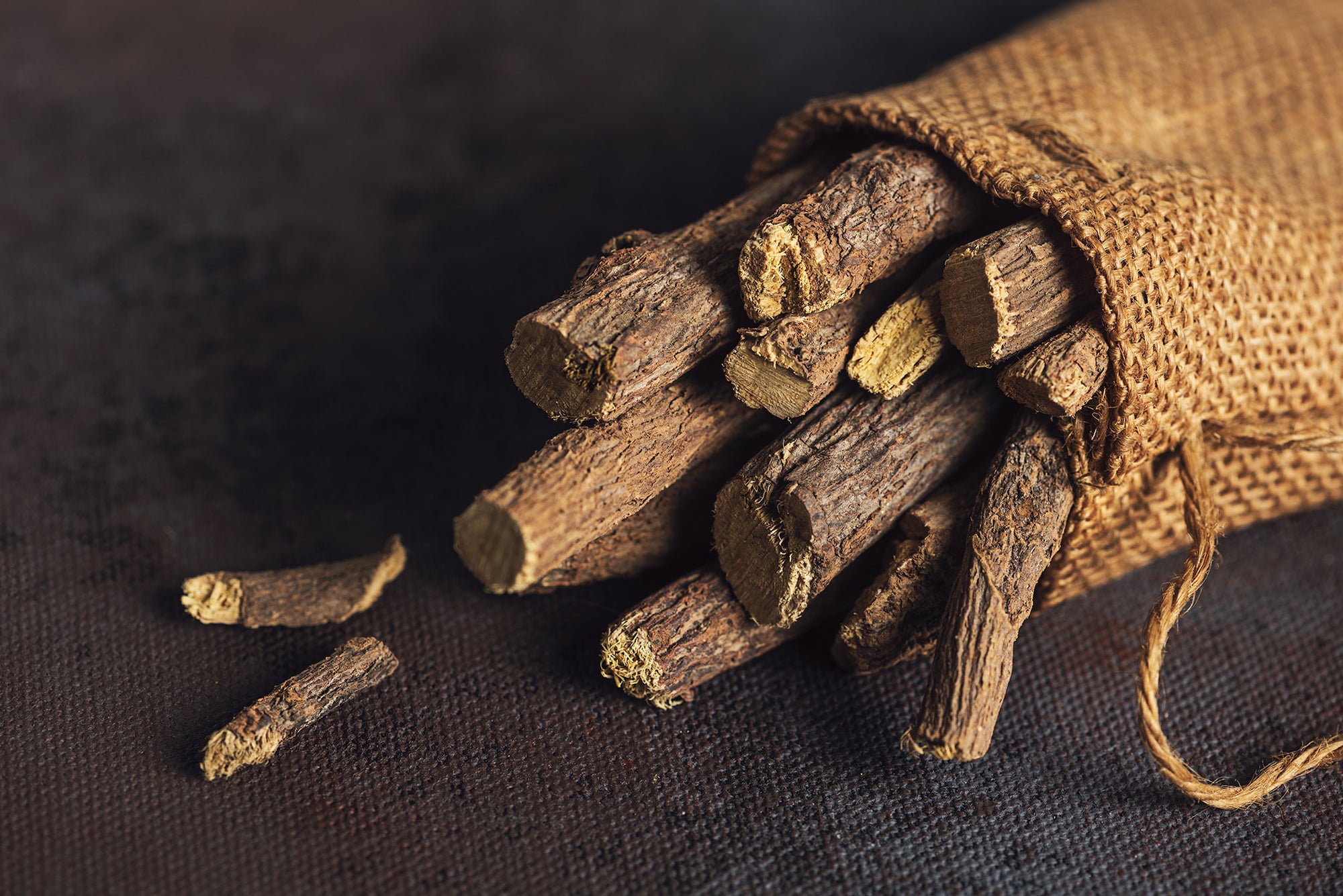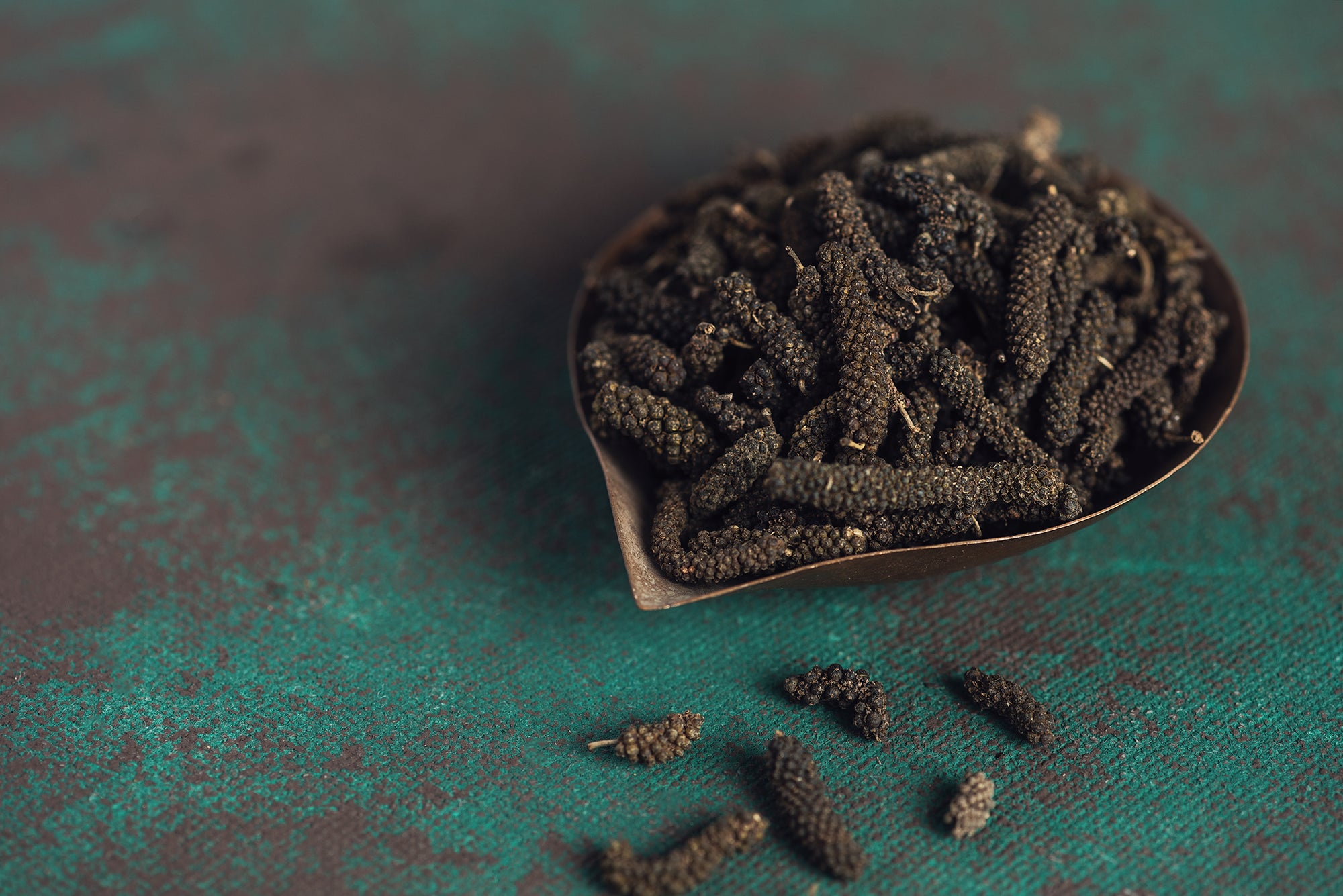Also known as False Sarsapilla, Sugandhi roots and Nannari roots, Indian Sarsapilla has a strong vanilla and cinnamon flavor.
Considered to be a very sacred herb, Indian sarsaparilla has a deep routed history in Indian medication. It is believed that Indian Sarsaparilla helps in increasing the energy levels in your body, in turn making you feel young.
Found mainly in Central and South India, this herb is also found in Sri Lanka.
Growing Indian Sarsaparilla
This plant is a fast growing thin perennial vine with prickly stems that cling onto surrounding plants for support. The leaves are oval shaped, slender with a smooth feel. If it’s in a suitable environment this plant with flower all year round; the flowers are small yet elongated in light green and purple hues.
The roots are hard, linear, with one main root with multiple small protruding branches. They emit a sweet scent that is similar to vanilla, cinnamon and almonds combined.
The plant is propagated from stem and the rootstock cuttings; the later is preferred. The cuttings are planted between July and September; the plants start initiating roots in about 45 days.
The roots when harvested are odorless, bitter and sticky. They are dried and boiled in order to produce the extract.
Rooted With Goodness
In India nannari is most commonly consumed in form of delicious beverages and drinks.
For making the sherbets or juice, fresh nannari roots are preferred. Only the barks of the roots are used, the white portion inside is discarded. These barks are washed and cleaned then cooked along with water, sugar and salt to make syrup. This syrup that can be refrigerated for a month is then mixed with milk or water for consumption.
Indian Sarsaparilla has been used for its healing properties since many years. The roots are prepared in various forms depending on the requirement; they are mostly dried and powdered then mixed with other herbs.
It is mainly used to detoxify the organs and purify the blood. It acts as a diuretic and helps prevent and treat urinary tract and bladder diseases.
This versatile root is very effective in the treatment of fever, gout, chronic nervous diseases, intestinal gas and more. The paste of its roots can be applied locally for arthritic pains.
Also known as Anantmoola, it is said that this herb helps improve the quality of sleep with an increase in dream activities. In fact the natives of the Himalayan mountains are known to powder the roots and leaves to blend them with various other herbs and smoking them. This puts them in a profound state and gives them clear vivid dreams.
We have used Indian Sarsaparilla in:
Quick Facts
| Name: | Indian Sarsaparilla |
| Scientific Name: | Hemidesmus indicus |
| Cultivated in: | Central and South India |
| Other names: | Nannari, Anantmool |
| Habitat | Sunny |
| Soil | Fertile slit clay soil |
| Aroma | Cinnamon, Vanilla |
| Plant parts used | Root, Leaves |
Known As In
| Hindi | Anantamul |
| Marathi | Anantvel |
| Telugu | Nannari |
| Gujrati | Sariva, Upalasari |
| Oriya | Onotomulo |
| Malayalam | Narunenti |
| Tamil | Nannari |
| Kannada | Sodadeberu |
Ayurvedic Facts
| Sanskrit Name: | Anantamul |
| Taste: | Bitter, Sweet |
| Energitics: | Cooling |
| Effect on Doshas: | Pacifies Kapha, Vata and Pita |
| Used for Treating: | Insomnia, Kidney Problems, Anemia, Fatigue, Ulcer, Leucorrhea |





.png?v=1668878203)



